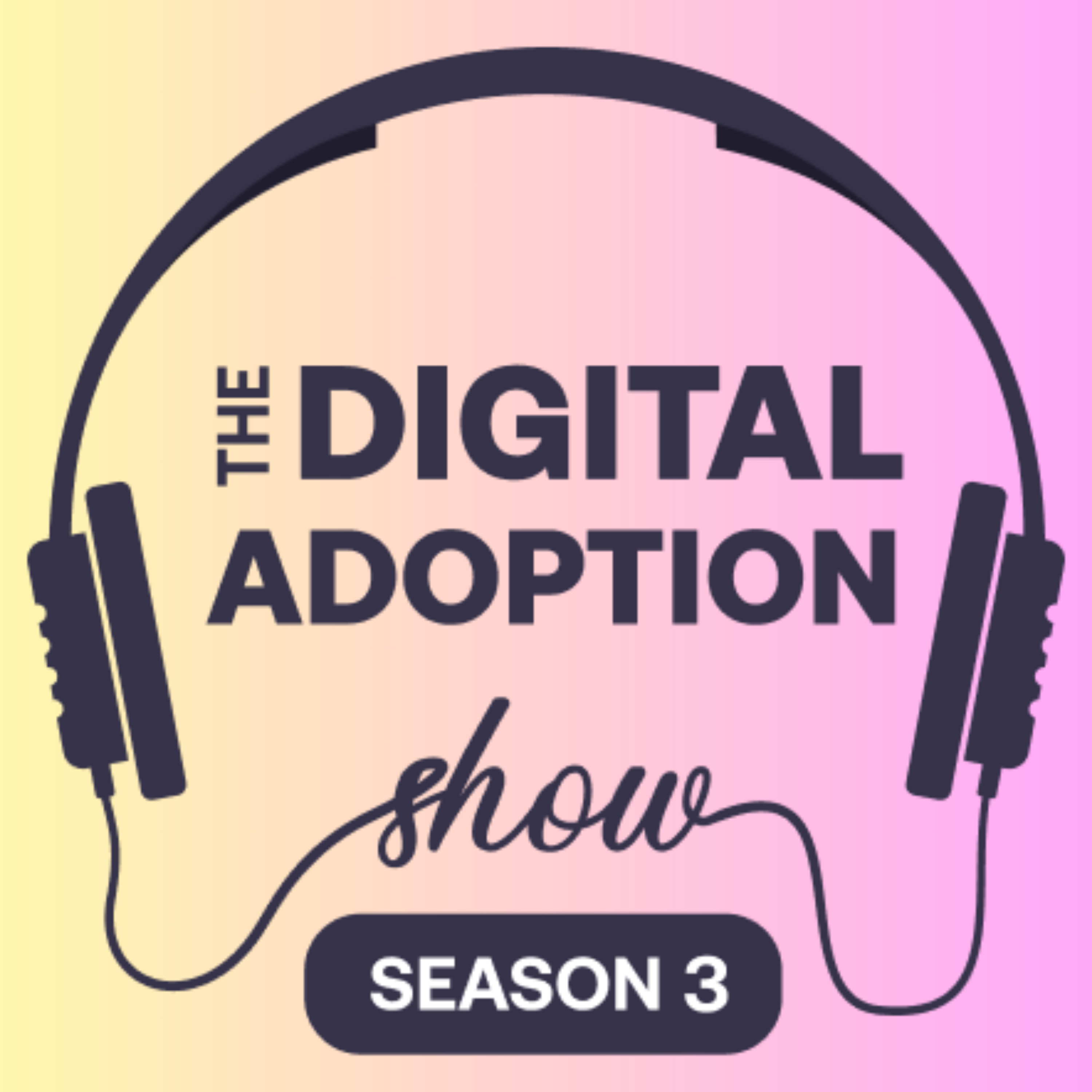Introduction
- In this article, we’ve curated content from our top three episodes. You’ll gain valuable insights from Dr. Thomas Blumer, the former Director of Knowledge Management at QAD, on the transformative power of digital adoption platforms.
- We also explore leadership evolution and future work trends with Wagner Denuzzo, a visionary in learning and development.
- Finally, Katie Lackey, Vice President of Global Learning and Talent Management at Honeywell, offers her perspective on managing polarities in organizational decision-making.
Join us as we delve into these enriching discussions guided by distinguished hosts and their esteemed guests.
Hack 1: Leveraging Digital Adoption Platforms
Understanding Digital Adoption Platforms
In our first highlight, Arijit, Director of Sales at Whatfix, introduces us to Dr. Thomas Blumer, the former Director of Knowledge Management at QAD. With a rich background in digital adoption, AI, and ML, Thomas shares his extensive experience in enhancing customer value and the transformative power of digital adoption platforms in today’s rapidly evolving tech landscape.
Arijit: For our listeners who are new to this, could you explain what a digital adoption platform is and why it is crucial in today’s technology landscape?
Thomas: Absolutely. A digital adoption platform (DAP) is often created as a software overlay on top of your existing application. This can be a web application, desktop application, or even a mobile application. Now, you might wonder, why would I need an overlay on my software? Just think about how many times you got frustrated because it didn’t work the way you expected or how much time you wasted finding a feature you know exists but don’t use all the time.
A DAP can automate these processes. For instance, if you frequently need to save images on Instagram but can’t remember where the option is, a DAP can create a custom button for you. This makes your user experience much smoother without modifying the code.
The Importance of Digital Adoption Platforms
Thomas: To your second part, why is it important right now? There’s so much change coming with AI at the brink of being introduced. Now you have a tool to control AI, other applications, and most importantly, you can see what’s happening in your organization. Many times, people don’t even know how their applications are used, where they work well, and where people struggle. With DAPs, you have all this visibility and can take actionable steps to improve the situation. It’s a tremendous tool.
Arijit: Right. Very interesting. So, it sounds like you can track user behavior, how they are using the system or how they should be using it, and influence that behavior by setting up nudges or notifications.
Thomas: Yes, exactly. Traditional UX sessions involve a few people or interviews, and many times they tell you what you want to hear. But with a DAP, you can see where users go and what they do. The insights you gain are amazing, and you can turn any user session into a UX session and learn from it. It’s super powerful.
Justifying the Adoption of Digital Adoption Platforms
Arijit: Absolutely. In terms of return on investment, what framework should organizations consider to justify adopting DAPs effectively?
Thomas: That’s a good question and not an easy one. The base is always a return on investment calculation. You need to think about call deflection, shortening process times, lowering error rates, faster onboarding, and how much that will contribute to your organization. But you should also consider the cost of inaction—what will it cost you from a reputation or financial standpoint if someone uses an unsanctioned AI solution and there’s a data leak?
Another important aspect is storytelling. People remember stories more than numbers. A compelling story can make a significant difference. For example, Steve, the lead of the World Bank in the nineties, didn’t just present numbers to justify creating an internet presence; he shared a story about a town in Africa that needed help but couldn’t find the World Bank because they didn’t have an online presence. People forget numbers, but they remember stories.
Hack 2: Evolving Leadership in the Digital Age
Leadership Evolution Over the Years
Next, we welcome Wagner Denuzzo, a visionary in learning and development, guided by Abhirami Prakash, team lead for sales and development at Whatfix. Wagner, with his profound expertise as a licensed psychotherapist and roles at IBM and Prudential Financial, discusses the future of work, leadership performance, and organizational transformation in the digital age.
Abhirami: How do you think leadership teams have evolved over the years? Are there certain fundamentals that have remained constant, or do you think new approaches are proving successful in today’s rapidly changing landscape?
Wagner: That’s a question with many answers. Leadership is about finding what’s essential and becoming exceptional at being yourself, not trying to be someone else. It starts with combining your values and beliefs. Leadership isn’t about following a recipe; it’s about showing up as your true self and acting accordingly.
Some competencies remain valid, like continuously transforming. Change management feels traditional because it’s about integrating change into the flow of work and life. Leaders should give their teams permission to do great work and be outside observers—engaged but not attached. Innovation, creativity, and the best ideas often come from others, not the leaders themselves.
The Importance of Digital Skills
Wagner: One thing that’s changing is the need for cognitive mastery. Leaders must know their reactions to triggers and respond thoughtfully. There’s a global lack of trust in corporations, and leaders need to take accountability for their actions. Leaders should be courageous and make smarter decisions.
Distinct Leadership Styles
Abhirami: You talk about distinct leadership styles in your book. How do we identify them, and how can we apply them in the modern workplace?
Wagner: The modern workplace is open and transparent. Information is shared freely, and there are no hierarchical cascades. Leadership styles vary, but it’s important not to be judgmental. Leadership is about expressions of consciousness, curiosity, and courage. These expressions indicate leaders who are striving to be their best selves.
Principles for Leadership Success
Abhirami: For our enterprise audience, could you share the essential elements and principles that should be included in a leader’s framework for success in the digital workplace?
Wagner: Leaders need to account for vulnerability and self-disclosure. Developing leaders through simulations and leadership experiences is crucial. Use coaching circles and let leaders talk about the experiences they want to create for their teams. Focus on developing skills through practice and real-world experiences.
Hack 3: Managing Polarities in Decision Making
Understanding Polarities
Lastly, Prakhar Jain, VP of Global Sales at Whatfix, sits down with Katie Lackey, Vice President of Global Learning and Talent Management at Honeywell. Katie brings her experience in executive coaching and talent management to the table, offering insights into leadership development and the critical role of innovation and standardization in growing organizations.
Prakhar: Moving on to the topic itself, we are going to cover a lot about polarities in decision-making. Can you conceptualize the role of polarities in an organization and their importance in the 2024 business landscape?
Katie: Polarity management has been around for a long time. Barry Johnson did most of the research. It’s about both-and thinking rather than either-or thinking. In 2024, businesses are experiencing whiplash from rapidly changing environments. Managing polarities means understanding that two seemingly opposite things need each other to survive. For example, centralization and decentralization work in cycles. Leaders need to govern and think differently to manage these tensions effectively.
Real-World Scenarios of Managing Polarities
Prakhar: Can you describe some complex real-world scenarios where traditional decision-making falls short, and managing polarities gives a better solution?
Katie: One common area is organizational design. Businesses often set up structures supporting one side of a polarity, but this fails to navigate both sides. Another area is leadership succession, where promoting leaders based on their ability to centralize or decentralize can lead to failure if not balanced. Delivering transformation is another example. Leaders need short-term wins while holding a long-term strategy. Understanding and managing these polarities lead to more sustainable outcomes.
Conclusion
As we conclude this special recap episode, we hope it has fueled insightful reflections on change, continuous learning, and the benefits of digital adoption platforms. Thank you for joining us on this journey. Remember, you can find the Digital Adoption Show on platforms like Apple Podcasts, Spotify, Google Podcasts, YouTube, and much more.
Subscribe to stay updated with our latest discussions. Tune in anytime, anywhere.



